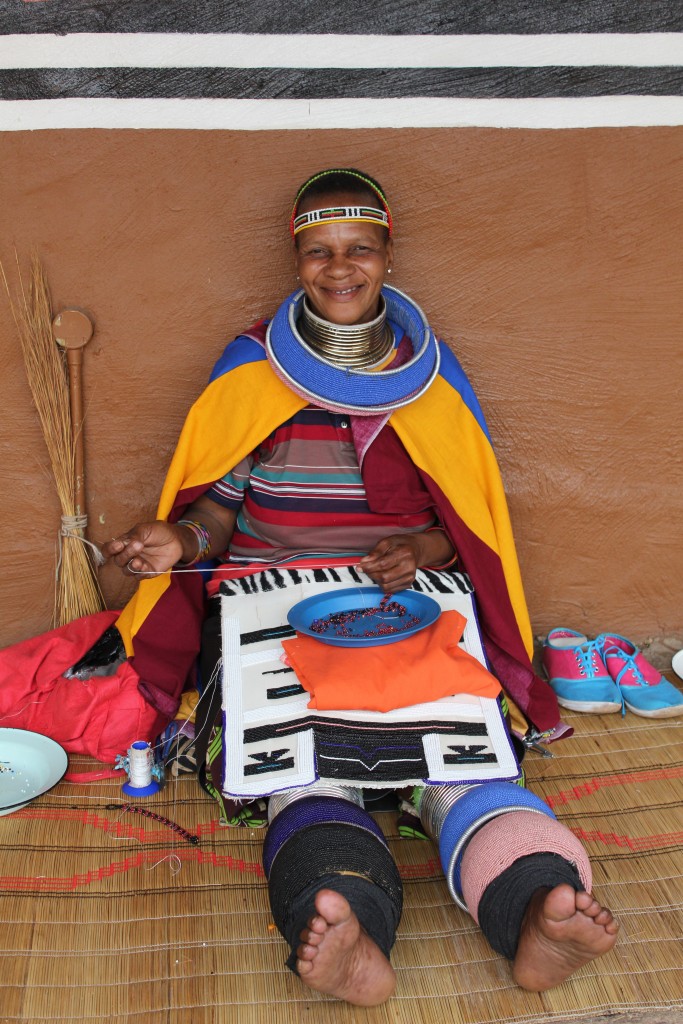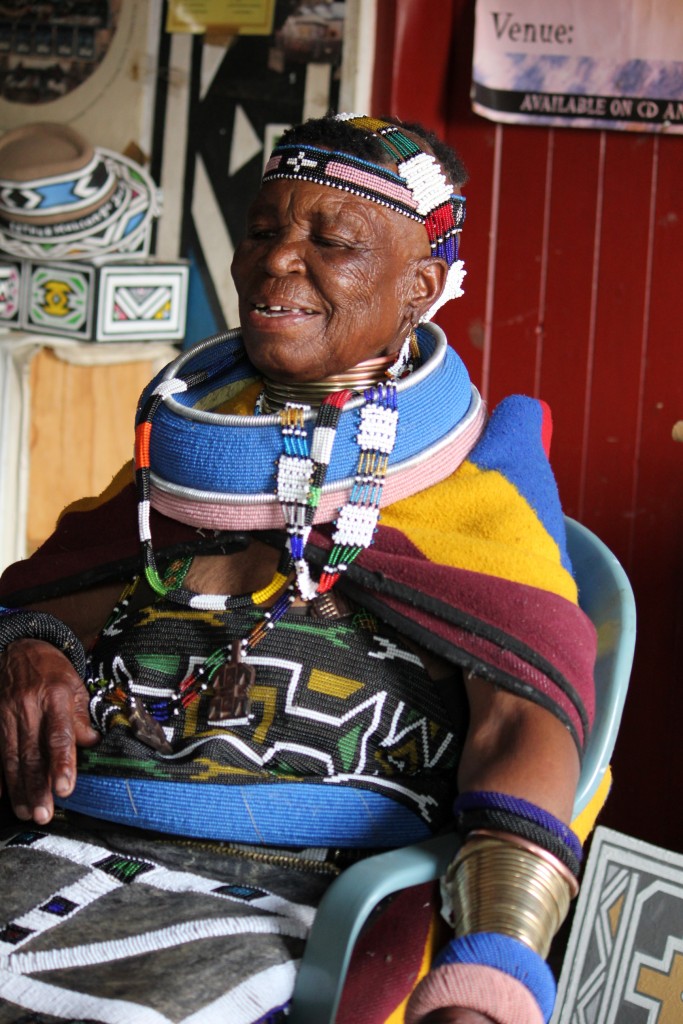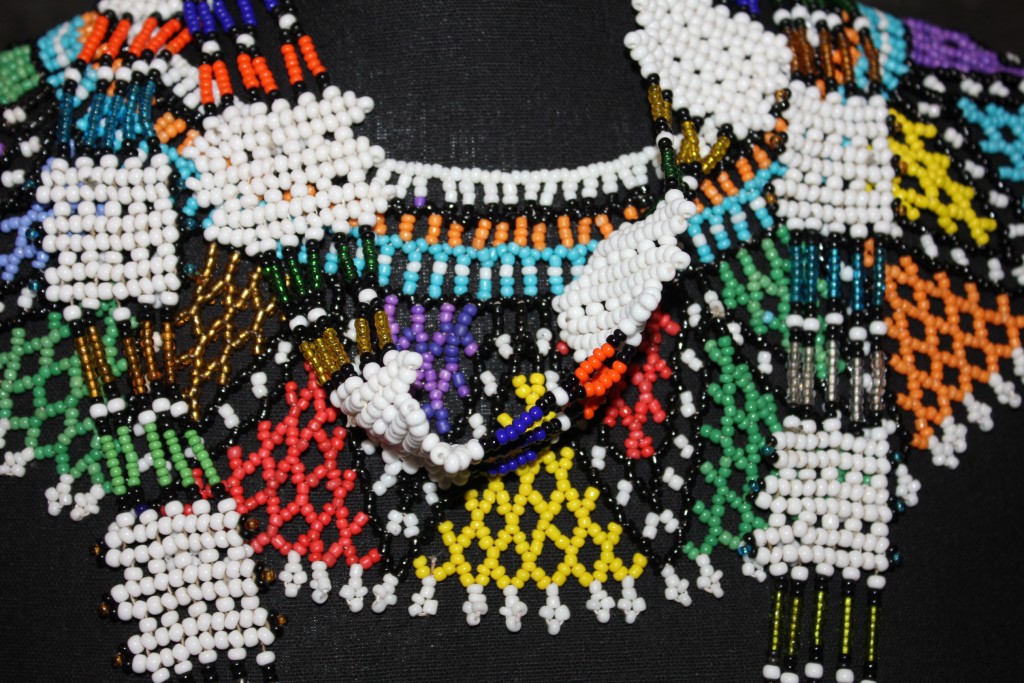The Ndebele people live near the border of South Africa and Zimbabwe and are closely related to the Zulus. The women are famed for the heavy brass rings they wear around their neck, arms and legs, symbols of their married status and worn with pride even though they hinder movement. The Ndebele comprises two groups, the Nzundaza and the Manala, each with their own individual characteristics and dialects. The Nzundza were defeated by the Boers in the Mapoch War in 1883 and thereafter were taken virtually as slaves to work on the farms and their lands were confiscated.
Beadwork was a visible means of emphasizing group values and identity as well as communicating status and the passing of rites. Traditional older pieces of Ndebele beadwork are characterized by large areas of white beads interspersed with small geometric designs in colour. Contemporary beadwork is identified by symmetrical abstract geometric designs and later pieces include references to everyday life such as licence plates, razor blades, pitched-roof houses, telephone poles and electrical lights.
One of the main functions of Ndebele beadwork is of social significance. Distinctive types of beadwork, and the way it is worn, mark the various stages of a woman’s life in Ndebele society. The young girls use a special apron called lighabi, while pubescent girls wear an isiphephethu, a rectangular shaped apron panel made of hide or canvas, which is decorated with geometric beaded patterns. These aprons are usually made by the girl’s mother or grandmother. Married women use another type of apron called liphotho and have a fringe in the centre and rectangles at the sides. Yet another type is used on the wedding day. For important ceremonies, young women wear isigolwane, wide beaded arm and leg rings filled with grass, to attract young men.





